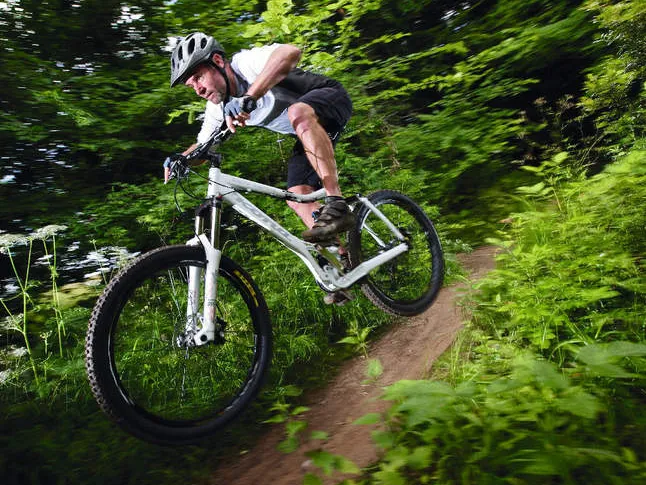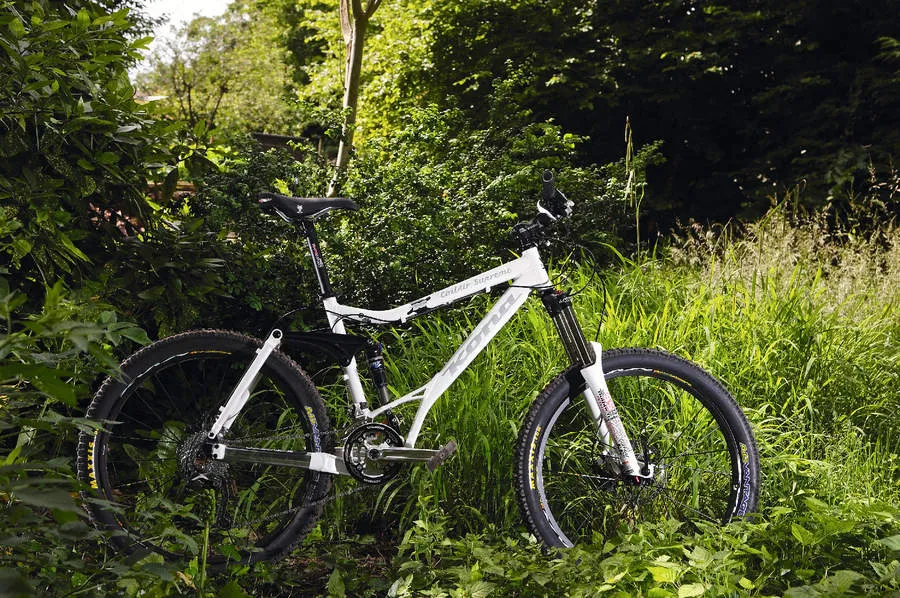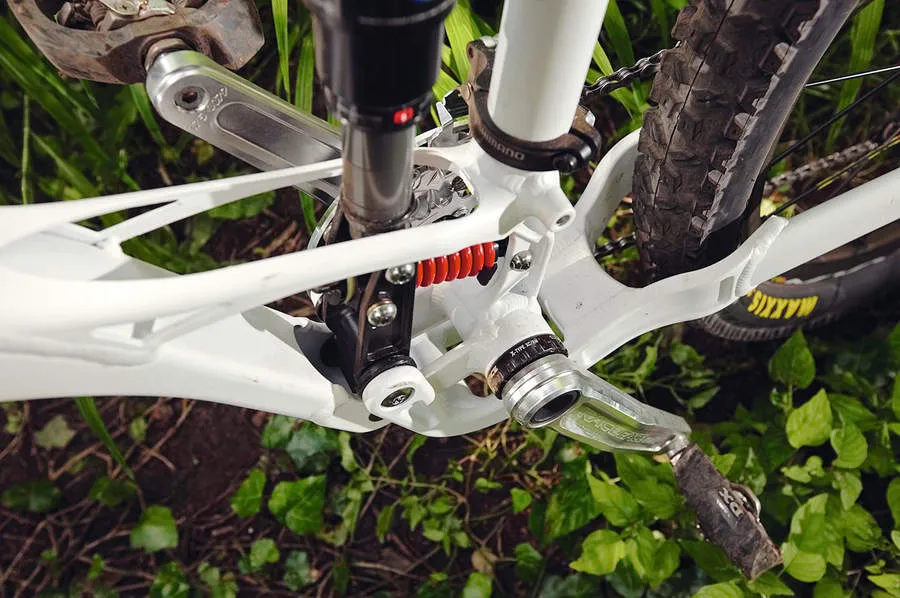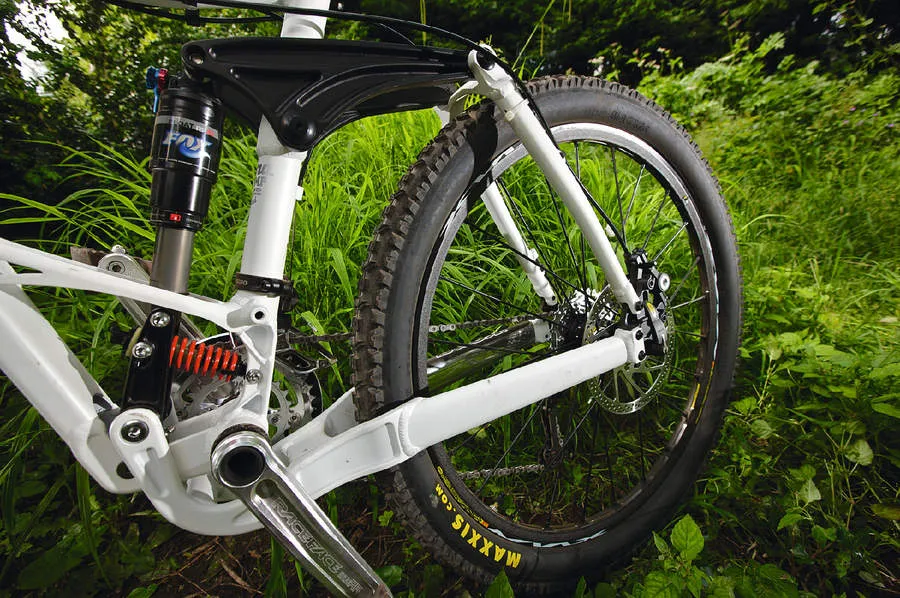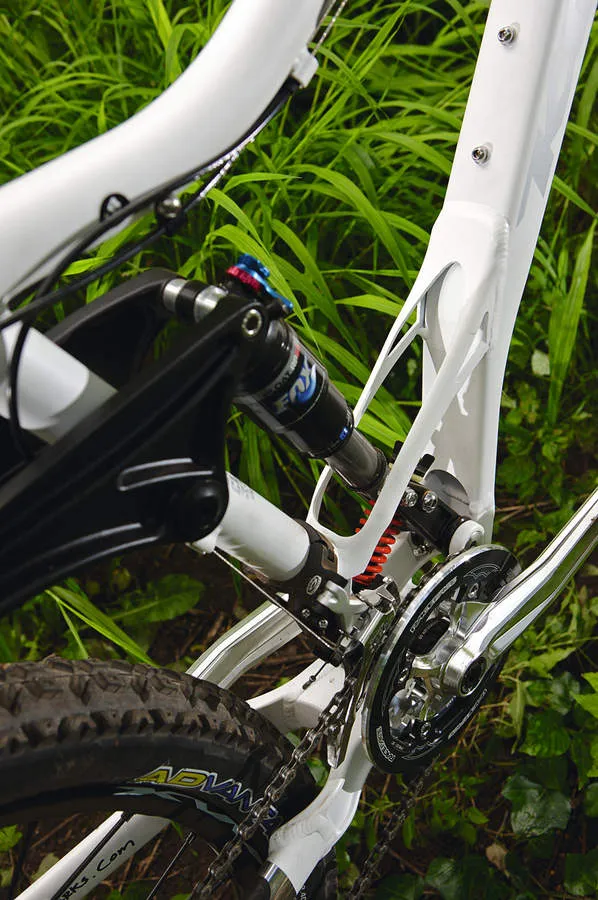With its new Magic Link, Kona bills its CoilAir bikes as able to climb like a short-travel cross-country bike and descend like a long-travel downhill bike. Amazingly, the CoilAir Supreme does exactly that.
The top model in Kona’s CoilAir range of all-mountain/freeride bikes, the CoilAir Supreme is a gravity bike that you can pedal back up again without busting a gut.
Unlike other bikes we’ve tested with over 7in of suspension travel, the CoilAir Supreme weighs under 34lb. Consider this, and the fact that the suspension really can feel like a much short-travel bike on the climbs – if you set it up right – and you can see why this is a newsworthy bike.
The heart of the CoilAir Supreme’s prowess is the Magic Link, which changes the actuation of the rear shock so that it behaves differently according to the circumstances.
The practical upshot is a 7in travel bike that you pedal up hills as though it were a four-incher but then allows you to drop rashly down rocky rushes.
Ride & handling: climbing prowess lives up to the hype
The first thing we noticed about the Supreme is that it really does climb well. It’s a little better than any other 33lb bike we’ve ridden, and a lot better than any other long-travel bike.
The small bump suspension is fluid enough to take maximum advantage of big tyre traction, but under pedal pressure it becomes taut enough to stifle the wallow that often afflicts long-travel bikes.
Automatically steeper geometry kicks in as soon as you’re putting maximum power through the pedals. Obviously this helps with climbing too, and you can dial the fork travel down if you feel inclined on long steady climbs.
But – and this is a fairly big but – it climbs much better if you’re sitting down. Stand up, for power climbing and fast acceleration, and the ride feel becomes more wallowy.
However you choose to set up the shock and the Magic Link, it’s hard to get the balance right.
A super-plush out-of-the-saddle feel is efficient if you’re tackling rock- and root-strewn ground; not so efficient when maximum pedal power on smooth ground results in weight shift-associated wallow.
You can adjust the ProPedal settings to firmer if you habitually power-ride standing up, but that compromises the plush feel over the pittery-pattery stuff.
When the terrain points down or becomes more challenging, the geometry slackens and the extra travel increasingly makes its presence felt.
It’s hard trying to work out what’s going on as you’re riding, but it does just what you want it to do. All you really notice is that when you ease off the pedal power everything becomes a bit plusher, then progressively tightens as you pedal harder.
Depending on how much power you’re putting in, the ride feel fluctuates constantly between suitably taut and super-plush, but without the obvious shock to pedal feedback that you feel on some bikes that try to achieve this.
Chassis: it’s a kind of Magic (Lnk)
From a distance, the CoilAir Supreme frame is not unlike the 2007 one. It still has its drop-out pivots on the seatstays rather than the chainstays, and it still has a long rocker to drive the shock.
Up close, things start to look very different. The low top tube is curved at the seat tube end instead of straight then braced across, and the boxy down tube now drops away to form an underbelly on which the Magic Link and the swingarm pivot.
Reinforcements seem to be in all the right places, although the open-ended lower down tube and struts across to the seat tube appear disconcertingly skeletal. As well as the Fox RP23 shock, CoilAirs come with a little subsidiary simple coil shock behind the Magic Link.
The Magic Link itself sits between the lower shockeye mount and the lowest swingarm pivot. The spring allows the Magic Link to move back and forth, changing the ‘angle of dangle’ between the shock and the frame.
It’s not just compression that causes the Magic Link to move. The overall float effect of the dual shock action allows your pedalling force to move the swingarm, the link and the lower shock mount forward.
This effectively limits the suspension travel by introducing a much tighter feel while you’re pedalling hard, at the same time as lifting the bottom bracket. That steepens the frame geometry and tips your weight slightly forward for a more aggressive riding stance.
As you ease off the pedalling and start descending, the geometry slackens. The suspension travel can increase from a taut 6in to an altogether plusher 7.4in, at the same time becoming more progressive and less affected by heavy braking.
The Marzocchi Bomber 55 ATA fork complements the rear action, with dual air cartridge adjustments, ATA travel adjustment from 125 to 165mm, and an easy-to-use Terrain Selection Technology dial to tune progressive lockout and big-hit release.
Equipment: top-notch gear
As befits a £2700 bike, the componentry is top-notch. Drivetrain parts include a Shimano XTR carbon caged Shadow rear gear, with Deore XT shifters and front mech, Race Face Atlas AM cranks with dual chainrings plus a bash guard ring.
Stopping duties are performed by Shimano Deore XT hydraulic disc brakes with suitably big rotors, while the wheels are Mavic’s suitably tough but not overly heavy Crossmax STs shod with Maxxis Advantage 2.4in treads.
Verdict: almost the best of both worlds
For riders who like sitting while climbing, the CoilAir Supreme comes closer to achieving the best of both worlds than any other long-travel bike we’ve tested.
But it’s still a gravity bike.
Going uphill is still hard work, and if you like to stand and power climb you’ll need to use the lockout dials on the shock and fork.
Setting up the Magic Link is straightforward if you don’t mind reading instructions, and fine-tuning is easy. You’ll be experimenting for a while before you find the set-up that ideally suits your ride style.
At that point you’ve got a bike that’s not as stiff or hefty as a downhill bike, but seems to descend just as well.
